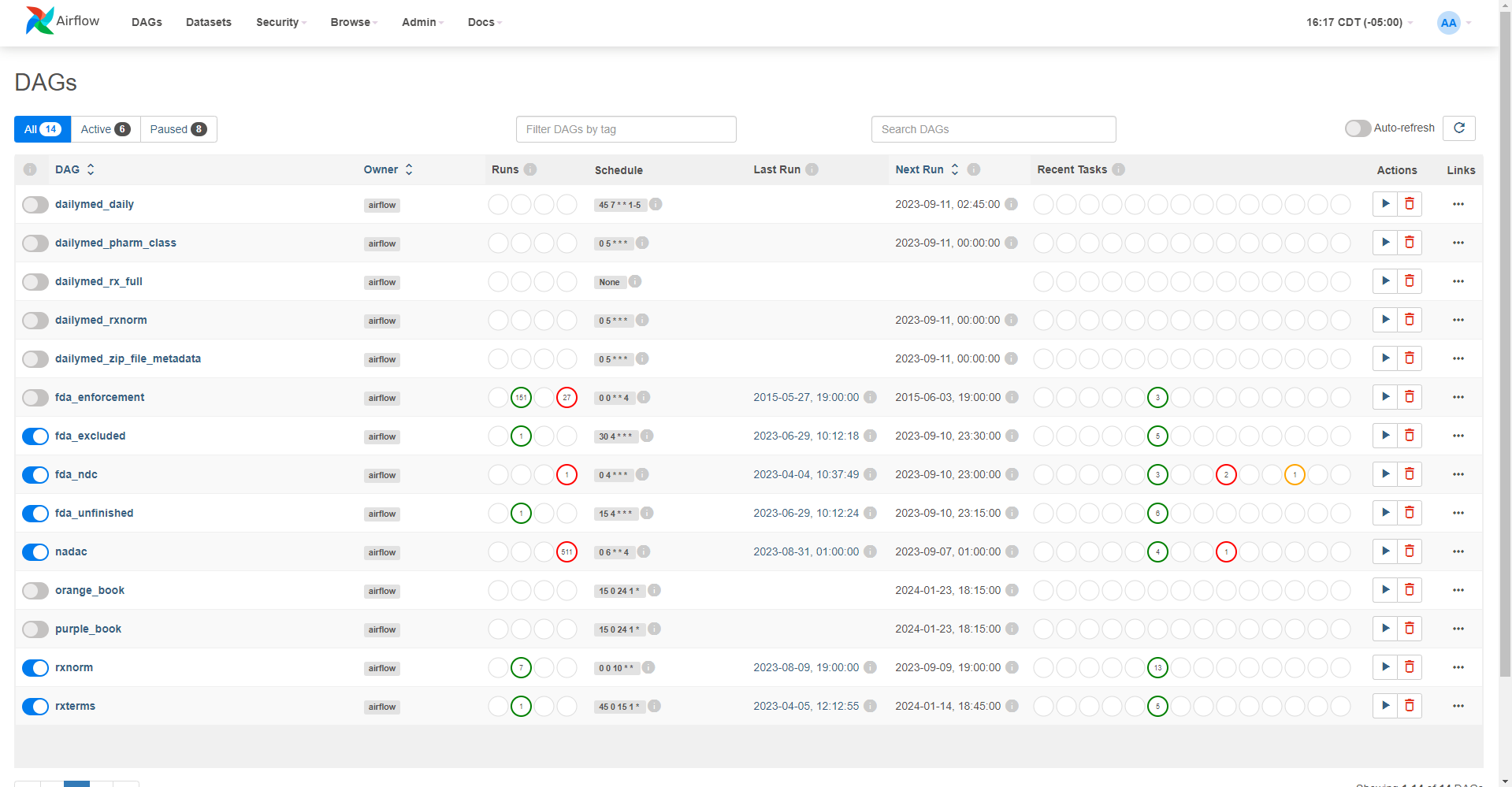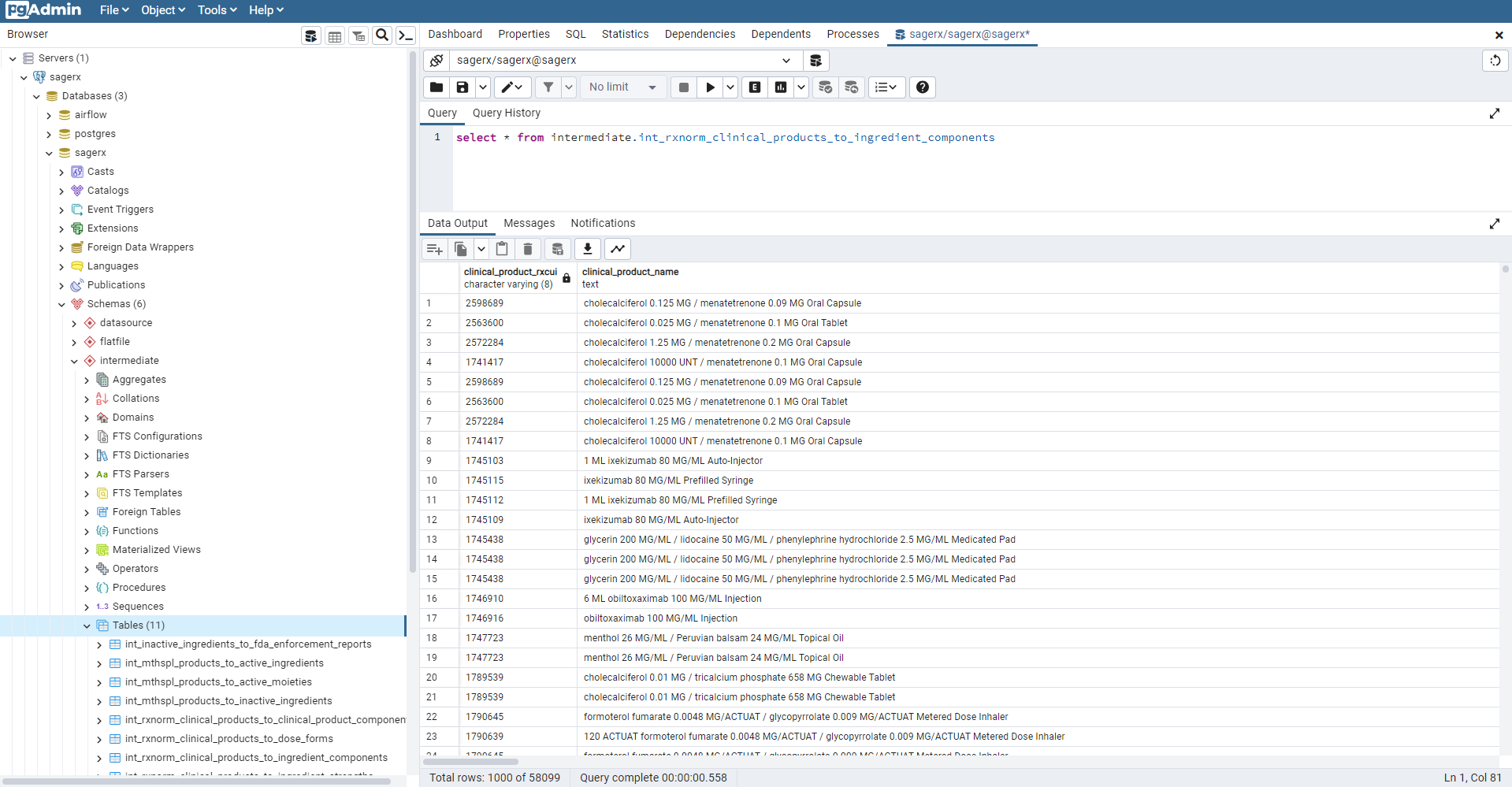SageRx is a medication ontology and medication-related data aggregator created from many different public sources of data.
Including data from DailyMed, FDA, RxNorm, Orange Book, and more!
SageRx uses Airflow to schedule jobs to extract, load, and transform (using DBT) open drug data.
Data ends up in a PostgreSQL database and can be queried using pgAdmin (included with SageRx) or via any SQL editor of your choice.
We will be moving documentation over to Github, but additional documentation exists on the SageRx Website.
Subscribe to our newsletter to keep ontop of updates.
We would love to see you contribute to SageRx. Join our Slack channel to get involved.
- Install Docker.
- Windows users will also install WSL 2 (a Linux subsystem that runs on Windows) as part of this process.
- Clone the repo.
- Add a
.envfile at the root of the repo. - Add ENV vars to the
.envfile.AIRFLOW_UID=<uid>- UID can be found by runningid -uon linux systems, typically the first user on the system is1000or1001.- Windows users following the Docker Desktop install guide should have WSL 2 installed. You can open up command line, type
wsland then within WSL 2, you can enterid -uto see your UID.
- Windows users following the Docker Desktop install guide should have WSL 2 installed. You can open up command line, type
UMLS_API=<umls_api_key>- if you want to use RxNorm, you need an API key from UMLS.
- Make sure Docker is installed
- Run
docker-compose up airflow-init. - Run
docker-compose up.
NOTE: if you have an M1 Mac
export DOCKER_DEFAULT_PLATFORM=linux/amd64, and re-build your images
- Airflow UI is hosted on
localhost:8001or0.0.0.0:8001- Username/password =
airflow/airflow
- Username/password =
- PgAdmin is hosted on
localhost:8002or0.0.0.0:8002- Username/password =
sagerx/sagerx
- Username/password =
On docker-compose up a DBT container will be created to be used for cli commands. To enter commands run docker exec -it dbt /bin/bash. This will place you into a bash session in the DBT container. Then you can run DBT commands as you normally would.
To serve DBT documentation locally, enter the commands in the DBT container dbt docs generate then dbt docs serve. They should generate on http://localhost:8080
If you get issues on folder permissions:
sudo chmod -R 777 postgres,data,extracts,logs,plugins

